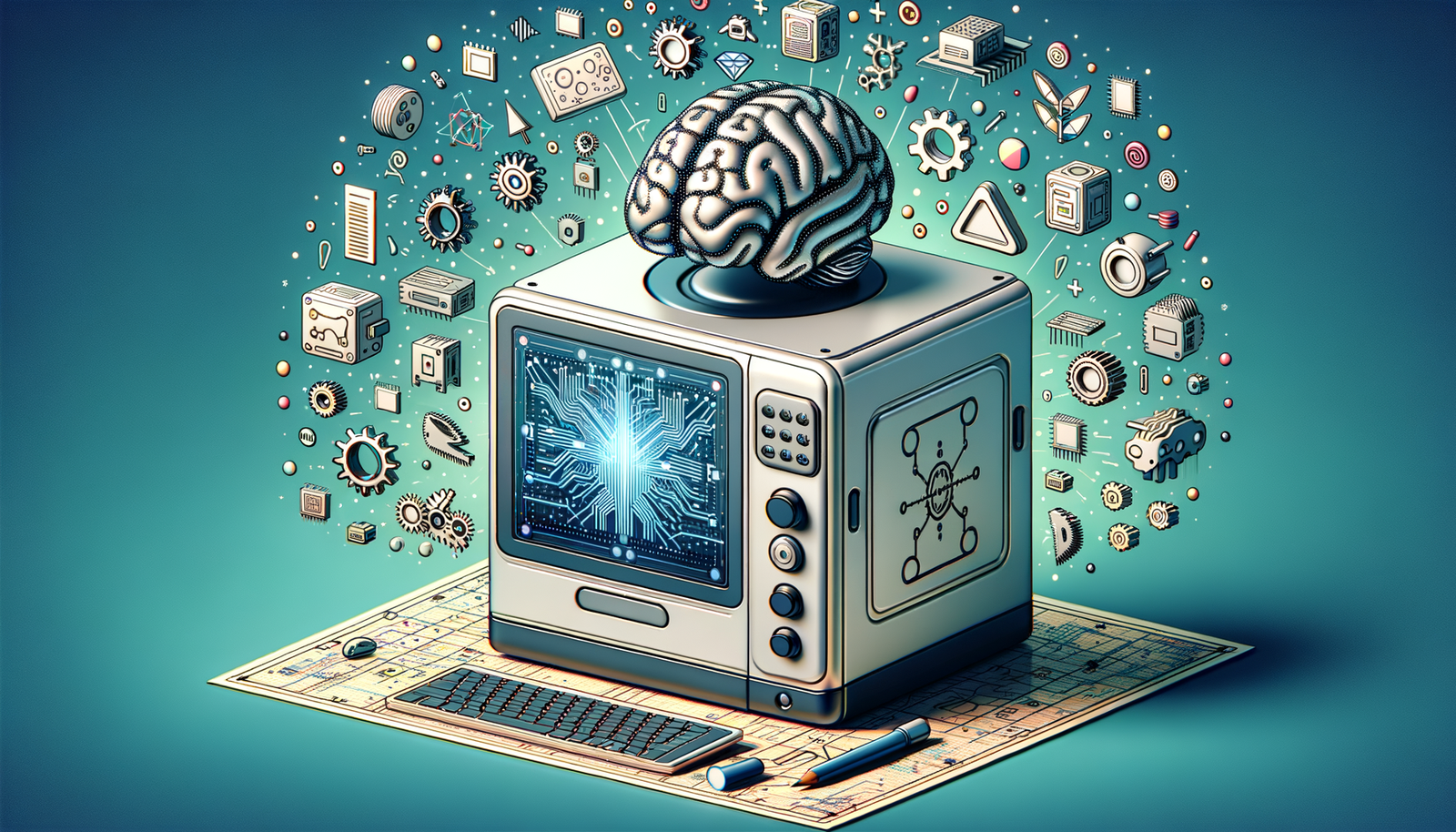Your Cart is Empty
Customer Testimonials
-
"Great customer service. The folks at Novedge were super helpful in navigating a somewhat complicated order including software upgrades and serial numbers in various stages of inactivity. They were friendly and helpful throughout the process.."
Ruben Ruckmark
"Quick & very helpful. We have been using Novedge for years and are very happy with their quick service when we need to make a purchase and excellent support resolving any issues."
Will Woodson
"Scott is the best. He reminds me about subscriptions dates, guides me in the correct direction for updates. He always responds promptly to me. He is literally the reason I continue to work with Novedge and will do so in the future."
Edward Mchugh
"Calvin Lok is “the man”. After my purchase of Sketchup 2021, he called me and provided step-by-step instructions to ease me through difficulties I was having with the setup of my new software."
Mike Borzage
AI-Driven CAD: Revolutionizing Design with Machine Learning Integration
November 23, 2024 4 min read


Introduction
The rapid advancement of AI technology is reshaping industries worldwide, and the design sector is no exception. Traditionally, Computer-Aided Design (CAD) has been a cornerstone in various design industries, enabling professionals to create precise models, detailed schematics, and intricate blueprints with unparalleled accuracy. However, as design challenges become more complex and the demand for innovation intensifies, there is a growing need for CAD systems to evolve. Enter machine learning, a subset of AI that empowers computers to learn from data and improve their performance over time without explicit programming. By integrating machine learning into CAD systems, we are witnessing a transformation from static design tools to intelligent platforms capable of predictive analysis, generative design, and enhanced decision-making. This evolution not only streamlines design processes but also sparks new possibilities for creativity and efficiency in the design landscape.
The Integration of Machine Learning in CAD Systems
The integration of machine learning into CAD systems marks a significant leap forward in design technology. Machine learning algorithms can analyze vast amounts of data, identifying patterns and trends that might be imperceptible to human designers. In the context of CAD, these algorithms examine historical design data, user interactions, and performance outcomes to inform current and future projects. By analyzing design patterns, machine learning can provide insights into optimal design practices, highlight potential flaws, and suggest improvements that enhance the overall quality of the product. Moreover, predictive modeling becomes a powerful tool within design workflows. By forecasting how a design will perform under various conditions, predictive models enable designers to make informed decisions early in the development process. This proactive approach reduces the need for costly revisions and accelerates time-to-market. The benefits of integrating machine learning into CAD systems include:
- Enhanced Design Accuracy: Machine learning algorithms can detect errors and inconsistencies in designs, ensuring higher precision.
- Improved Efficiency: Automation of repetitive tasks allows designers to focus on more complex aspects of the project.
- Data-Driven Insights: Access to analytical insights helps in making evidence-based design choices.
Transformative Applications of AI in Design Workflows
AI's transformative impact on design workflows is profound, introducing capabilities that were once the realm of science fiction. One key application is the automation in design evaluation and validation. AI systems can autonomously assess designs against predefined criteria, industry standards, and regulatory requirements. This automation not only expedites the validation process but also minimizes human error, ensuring that designs comply with necessary guidelines from the outset. Another groundbreaking application is AI-driven generative design. Generative design harnesses the power of AI to create numerous design iterations based on specific input parameters and constraints set by the designer. The AI explores all possible permutations, often revealing innovative solutions that human designers might not conceive independently. This approach fosters creativity and pushes the boundaries of conventional design thinking. Additionally, the incorporation of real-time feedback loops transforms how designers interact with their tools. AI can provide immediate adjustment recommendations based on user inputs and preferences, facilitating an interactive and dynamic design process. This instant feedback allows for on-the-fly modifications, enhancing the agility and responsiveness of the workflow. These transformative applications bring several benefits:
- Expedited Design Cycles: Faster iteration and validation processes reduce development time.
- Cost Reduction: Early detection of issues and optimized designs lower production costs.
- Enhanced Innovation: Access to a wider range of design options stimulates creative solutions.
Challenges and Ethical Considerations
While the integration of AI into design software offers substantial benefits, it also presents challenges and ethical considerations that must be thoughtfully addressed. One significant concern is data privacy. AI systems often require access to large datasets, some of which may contain sensitive or proprietary information. Safeguarding this data against breaches and unauthorized use is paramount to maintain trust and comply with legal standards. Another challenge is the potential for job displacement. As AI automates certain design tasks, there is a risk that some roles may become obsolete. This possibility necessitates a proactive approach to workforce development, such as upskilling and reskilling programs that prepare professionals for new opportunities created by AI advancements. Ethical guidelines are essential to navigate the complexities of AI integration. These guidelines should focus on:
- Transparency: Ensuring that AI decision-making processes are explainable and understandable to users.
- Accountability: Establishing clear responsibility for AI-generated outcomes, especially in critical applications.
- Inclusivity: Preventing biases in AI algorithms that could lead to unfair or discriminatory practices.
Conclusion
In conclusion, the fusion of AI and machine learning with CAD systems is profoundly transforming modern design practices. The potential of AI-powered CAD to revolutionize workflows, enhance innovation, and improve efficiency is immense. As the design software landscape continues to evolve, embracing these technological advancements becomes not just an option but a necessity for staying competitive. However, as we integrate these powerful tools, it's imperative to do so thoughtfully, with a keen eye on ethical considerations and the preservation of human creativity. Designers are encouraged to adopt AI technologies that complement and expand their skill sets, leveraging the strengths of both human ingenuity and machine intelligence. By doing so, we can unlock unprecedented possibilities in design, fostering a future where technology and creativity coexist harmoniously to push the boundaries of what's possible.
Also in Design News

Design Software History: Augmented Reality's Transformative Role in Construction Site Design and Visualization
November 23, 2024 7 min read
Read More
ZBrush Tip: Enhancing Precision in ZBrush: Effective Techniques for Utilizing Reference Images
November 22, 2024 2 min read
Read More
V-Ray Tip: Optimizing Texture Workflow with V-Ray's Triplanar Mapping Techniques
November 22, 2024 2 min read
Read MoreSubscribe
Sign up to get the latest on sales, new releases and more …


